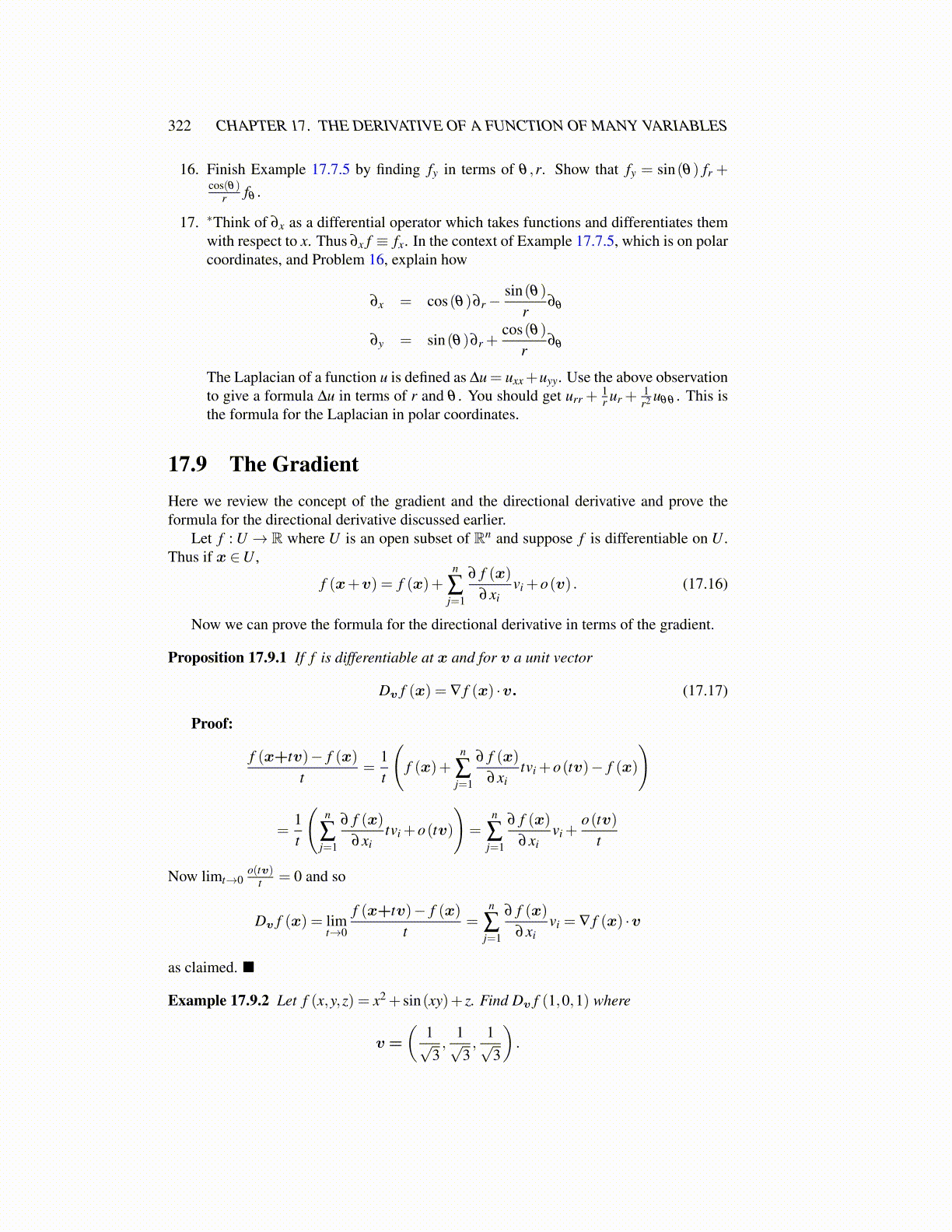
322 CHAPTER 17. THE DERIVATIVE OF A FUNCTION OF MANY VARIABLES
16. Finish Example 17.7.5 by finding fy in terms of θ ,r. Show that fy = sin(θ) fr +cos(θ)
r fθ .
17. ∗Think of ∂x as a differential operator which takes functions and differentiates themwith respect to x. Thus ∂x f ≡ fx. In the context of Example 17.7.5, which is on polarcoordinates, and Problem 16, explain how
∂x = cos(θ)∂r−sin(θ)
r∂θ
∂y = sin(θ)∂r +cos(θ)
r∂θ
The Laplacian of a function u is defined as ∆u = uxx+uyy. Use the above observationto give a formula ∆u in terms of r and θ . You should get urr +
1r ur +
1r2 uθθ . This is
the formula for the Laplacian in polar coordinates.
17.9 The GradientHere we review the concept of the gradient and the directional derivative and prove theformula for the directional derivative discussed earlier.
Let f : U → R where U is an open subset of Rn and suppose f is differentiable on U .Thus if x ∈U ,
f (x+v) = f (x)+n
∑j=1
∂ f (x)∂xi
vi +o(v) . (17.16)
Now we can prove the formula for the directional derivative in terms of the gradient.
Proposition 17.9.1 If f is differentiable at x and for v a unit vector
Dv f (x) = ∇ f (x) ·v. (17.17)
Proof:
f (x+tv)− f (x)t
=1t
(f (x)+
n
∑j=1
∂ f (x)∂xi
tvi +o(tv)− f (x)
)
=1t
(n
∑j=1
∂ f (x)∂xi
tvi +o(tv)
)=
n
∑j=1
∂ f (x)∂xi
vi +o(tv)
t
Now limt→0o(tv)
t = 0 and so
Dv f (x) = limt→0
f (x+tv)− f (x)t
=n
∑j=1
∂ f (x)∂xi
vi = ∇ f (x) ·v
as claimed. ■
Example 17.9.2 Let f (x,y,z) = x2 + sin(xy)+ z. Find Dv f (1,0,1) where
v =
(1√3,
1√3,
1√3
).